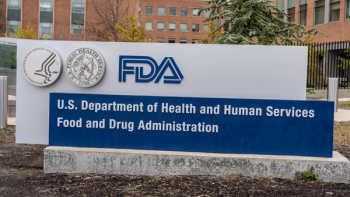
Serialization and Interoperability–Meeting the Goals of DSCSA
A new assessment shows year-over-year improvements on meeting DSCSA serialization requirements, which indicate the industry is making steady progress.
The ability to accurately identify and track pharmaceutical products at the package level-from the manufacturing facility all the way through the supply chain to dispenser-supports improved patient safety by providing unprecedented traceability and record-keeping opportunities. The US FDA’s 2013 Drug Supply Chain Security Act (DSCSA)1 now requires pharma products to be serialized in a standard fashion that is interoperable between trading partners and users for universal data exchange.
Over the past two years, manufacturers have been working on meeting DSCSA serialization requirements. A new assessment shows year-over-year improvements that indicate the industry is making steady progress.
Serialization requirements of DSCSA
The DSCSA requires labeling with specific, standardized data elements to support an interoperable, electronic system for identifying and tracing pharmaceutical products throughout their distribution in the United States. The four required data elements include a National Drug Code (embedded in a Global Trade Item Number, or GTIN), serial number, lot number, and expiration date.
The DSCSA also specifies that packages (“lowest saleable units”) must be marked with a two-dimensional (2D) barcode (e.g., GS1 DataMatrix barcode), and that homogeneous cases must include a 2D barcode or a linear barcode (e.g., GS1-128 barcode). Barcodes must be applied in a standardized way to facilitate accurate movement of product across the healthcare supply chain and to associate the physical product markings with the serialized electronic data exchange that will occur on or before November 27, 2023.
Taking stock
To obtain a view of industry’s progress in implementing serialization requirements, barcode assessments were conducted in 2017, 2018, and 2019 by AmerisourceBergen Corporation and McKesson Pharmaceutical in collaboration with GS1 US;2 Cardinal Health also joined the effort in 2018 and 2019. Each year, product barcodes were scanned and evaluated. Assessment results offer an indicator of how many packages and cases in the market at the time were marked with a serialized, readable barcode containing the four DSCSA-required data elements.
The latest barcode assessment shows remarkable progress has been made in the past year. In summer of 2019, nearly 18,000 barcodes produced by 747 manufacturers were scanned at AmerisourceBergen and McKesson distribution centers, and another 19,000 linear and 2D barcodes on approximately 8,000 cases from 177 manufacturers were scanned at Cardinal Health facilities. Results showed that 74.3% of pharmaceutical barcodes scanned in the wholesalers’ facilities met the requirements-a 54% year-over-year improvement when compared to the same study conducted in 2018.
At AmerisourceBergen, 71.9% of specialty products’ scanned packages had a readable 2D GS1 DataMatrix barcode with all four DSCSA-required data elements (compared to 20.4 percent in 2018). In McKesson’s facility, 71% of prescription products met the same requirements (compared to 20.8% in 2018). And at Cardinal Health, 78.7% of homogeneous cases with 2D (GS1 DataMatrix) barcodes and 73.3% with linear barcodes had all four data elements (compared to only 15.1% in 2018).
“The results just blew me away,” says Scott Mooney, vice president of Distribution Operations, Supply Chain Assurance at McKesson. “It was fantastic to see the percentage increase so high. Now, we just have to fill the gap to get to 100%.”
Steady progress
The industry has come a long way since 2017, when only 7% of packages carried all the necessary data elements. Tremendous progress was made in 2018-2019 as pharmaceutical companies prioritized serialization to benefit the entire healthcare system and prepare for DSCSA electronic data exchange requirements in 2023.
The number of serialized products found in this year’s assessment is particularly significant considering the FDA allows products that were placed into commerce before November 27, 2018 to be “grandfathered”-exempting them from the requirement-in order to ensure supply chains remained stocked with inventory, and patients could obtain proper medications when needed. Grandfathered inventory will continue to decrease as it is consumed or expires over the next several years. The average expiration date of products found in the 2019 inventory was only 1.6 years, compared to 2.3 years in 2018.
Problems solved
The 2017 and 2018 assessments identified issues with lack of adherence to industry barcode standards and placement-problems that can result in serious consequences, such as improper identification of products, faulty shipments, reduced operational efficiency, and product availability issues.
Quentin Dittman, director of Operations Technology at Cardinal Health, said “After last year’s assessment, we really dug into the data. We started talking with our suppliers, reaching out to understand any issues. This understanding was really crucial for us in order to push for the highest level of compliance. Bad barcodes mean bad problems for the supply chain.”
Major improvements were made between the 2018 and 2019 assessments in terms of barcode quality. For one, both prior assessments had revealed discrepancies in how companies encoded expiration dates, sometimes using “00” as the day in the expiration date or failing to include the day in the human readable expiration date. The 2019 assessment showed this issue has improved significantly, as only 183 of 16,300 scanned packages showed expiration date issues-a big change that will become especially important when trading partners begin exchanging data in 2023.
Another area of improvement was barcode legibility. In 2017 and 2018, some barcodes could not be scanned because they were applied on shiny surfaces or were printed in appropriate colors. The 2019 assessment showed this problem has also been minimized, and the higher-quality barcodes enabled faster scanning for significant time savings.
Business benefits
With results from the 2019 assessments, AmerisourceBergen, Cardinal Health, and McKesson are now able to follow up and share results with their individual supplier manufacturers and repackagers so that they can continue to make any course corrections, as needed.
As suppliers close the gap for 100 percent readability, the next big step for wholesalers and suppliers alike will be using the data for more efficient processes. In November 2019, the industry began using the barcode data for saleable returns verification, confirming what’s encoded in the barcode against the data that manufacturers have kept on file. Barcodes help save time, effort and ultimately labor costs, and quality is improved by limiting or eliminating error-prone manual data entry.
Data exchange in 2023
The most important results will be realized in 2023, when DSCSA requires implementation of an electronic, interoperable system for product tracing. Transaction information for each sale of certain prescription drugs will then be exchanged electronically to verify product identifiers at the package level. Ameer Ali, senior manager, Secure Supply Chain & Manufacturer Operations, AmerisourceBergen sums it up: “This has never been available before and will unlock value ad increase accuracy and specificity to new levels. Until then, the objective is to work to eliminate physical and data exceptions, and add the processes and equipment necessary to enable the capture, verification, and exchange of this information between stakeholders.”
The good news is that the industry is making steady progress toward that goal.
References
Peter Sturtevant, senior director, Industry Development at Pharmaceuticals, GS1 US
Newsletter
Lead with insight with the Pharmaceutical Executive newsletter, featuring strategic analysis, leadership trends, and market intelligence for biopharma decision-makers.




